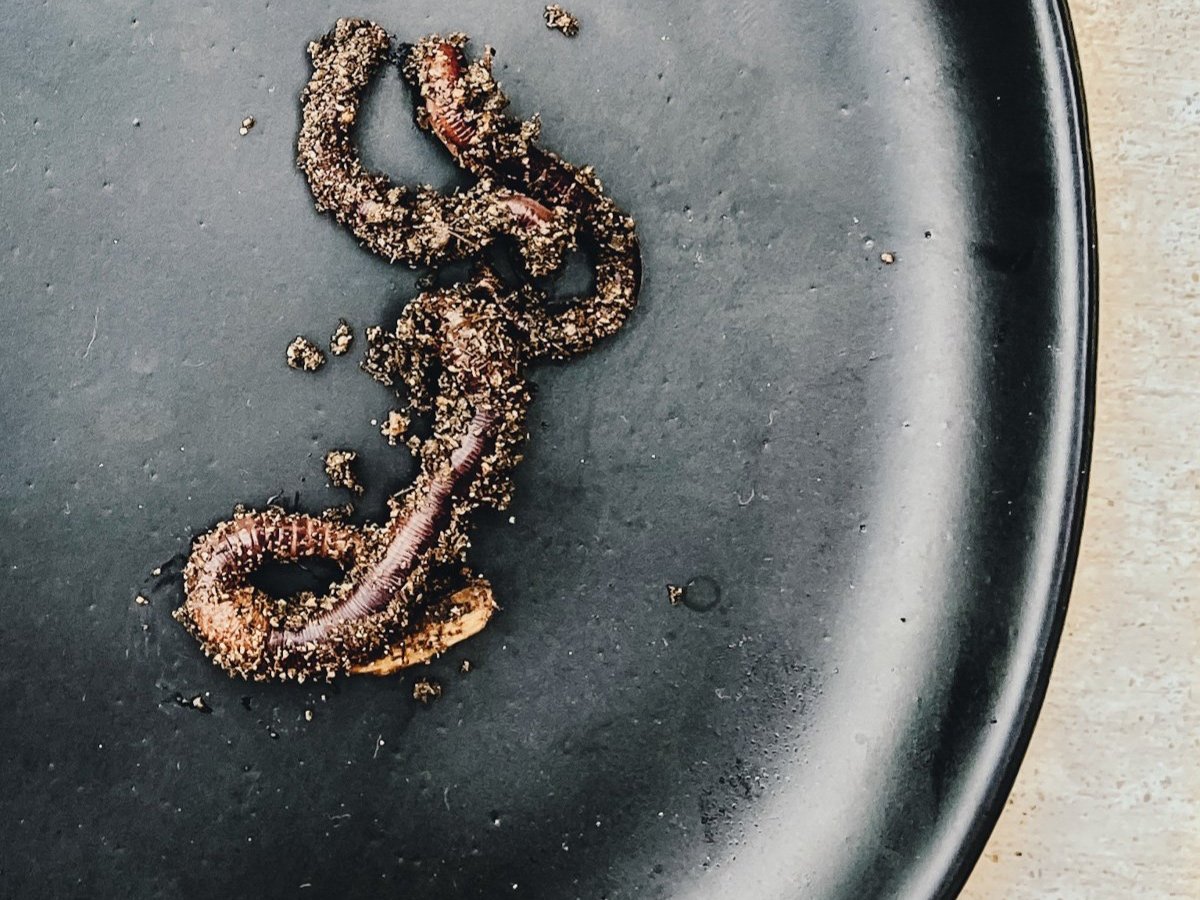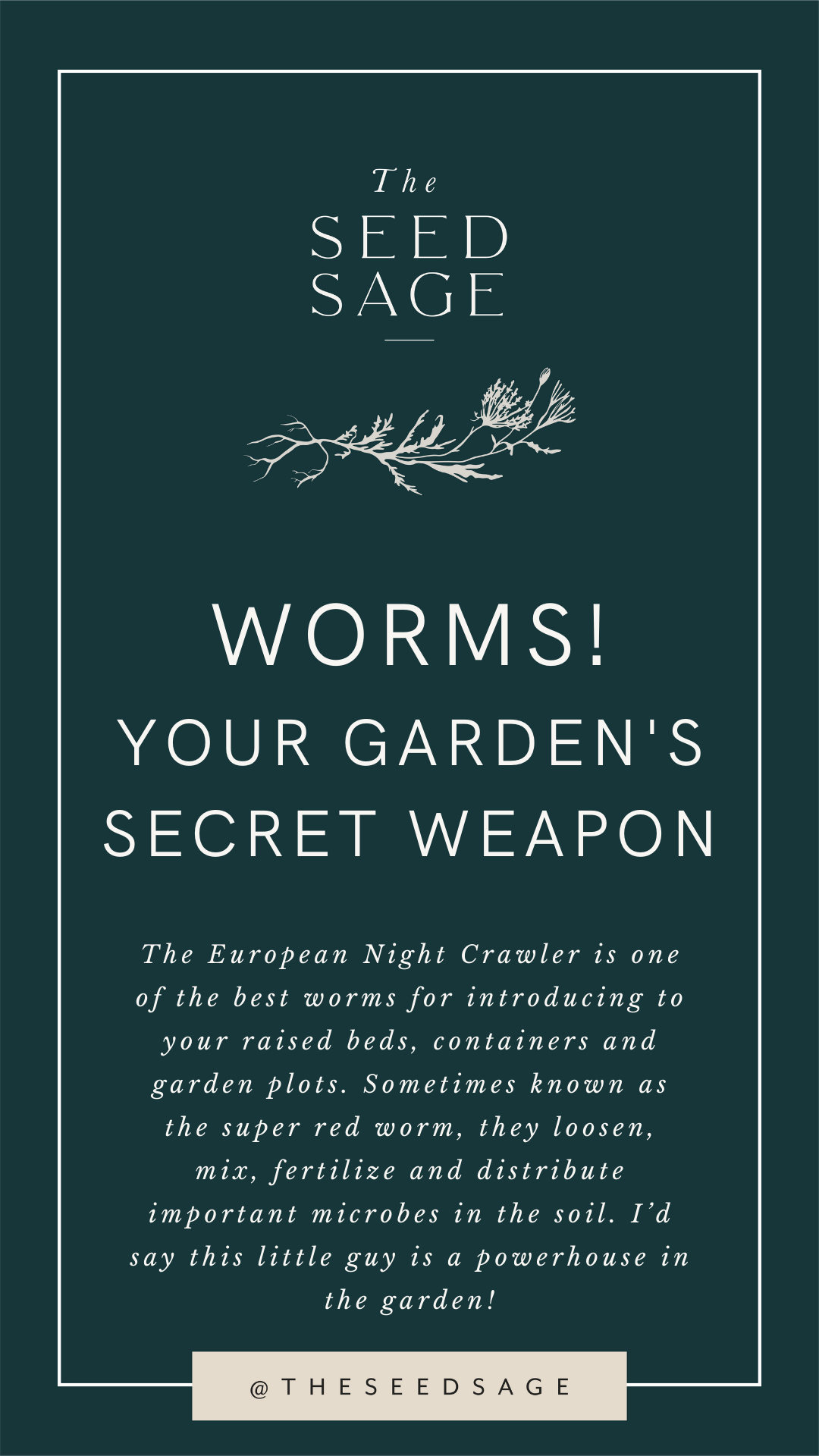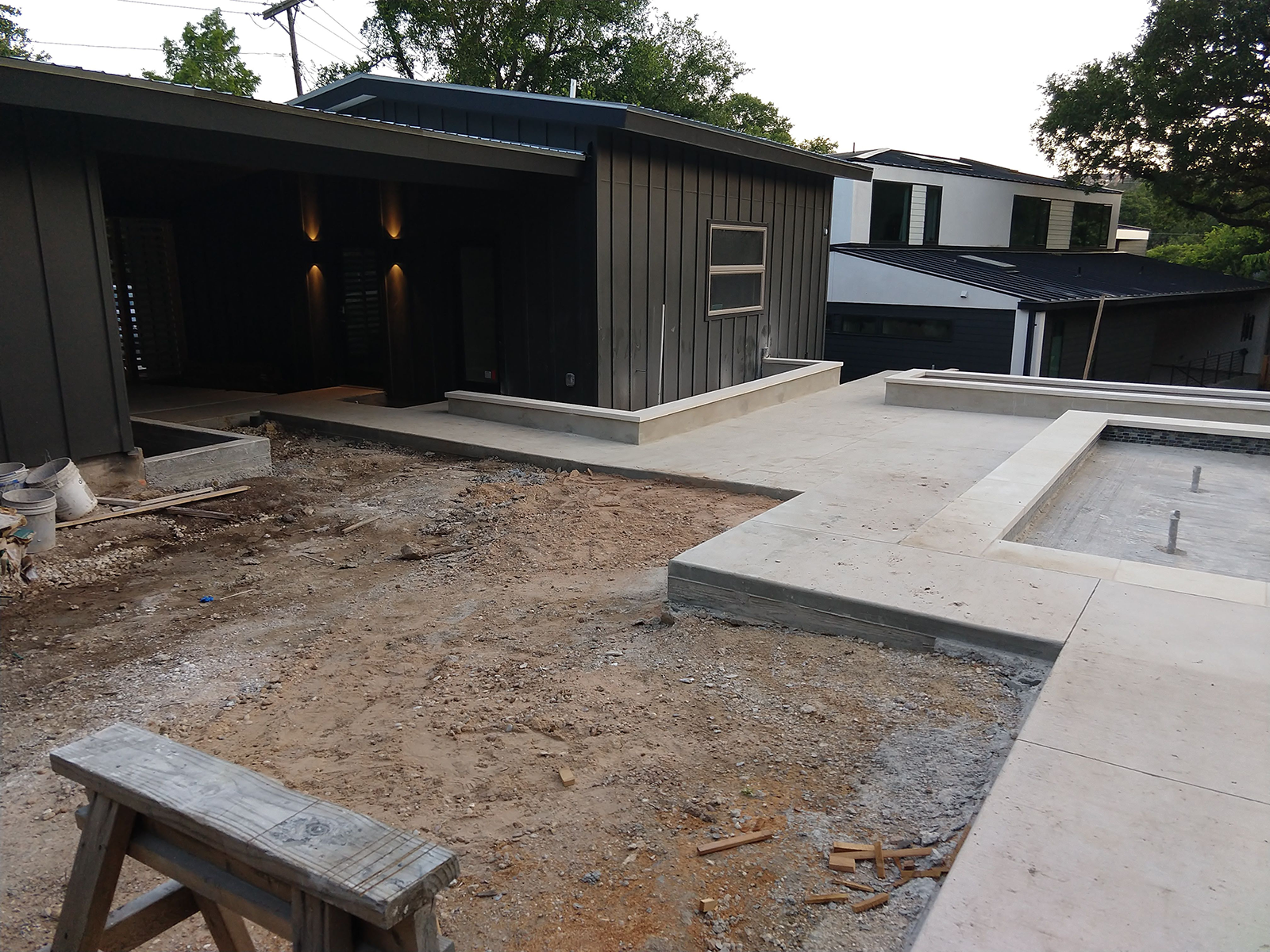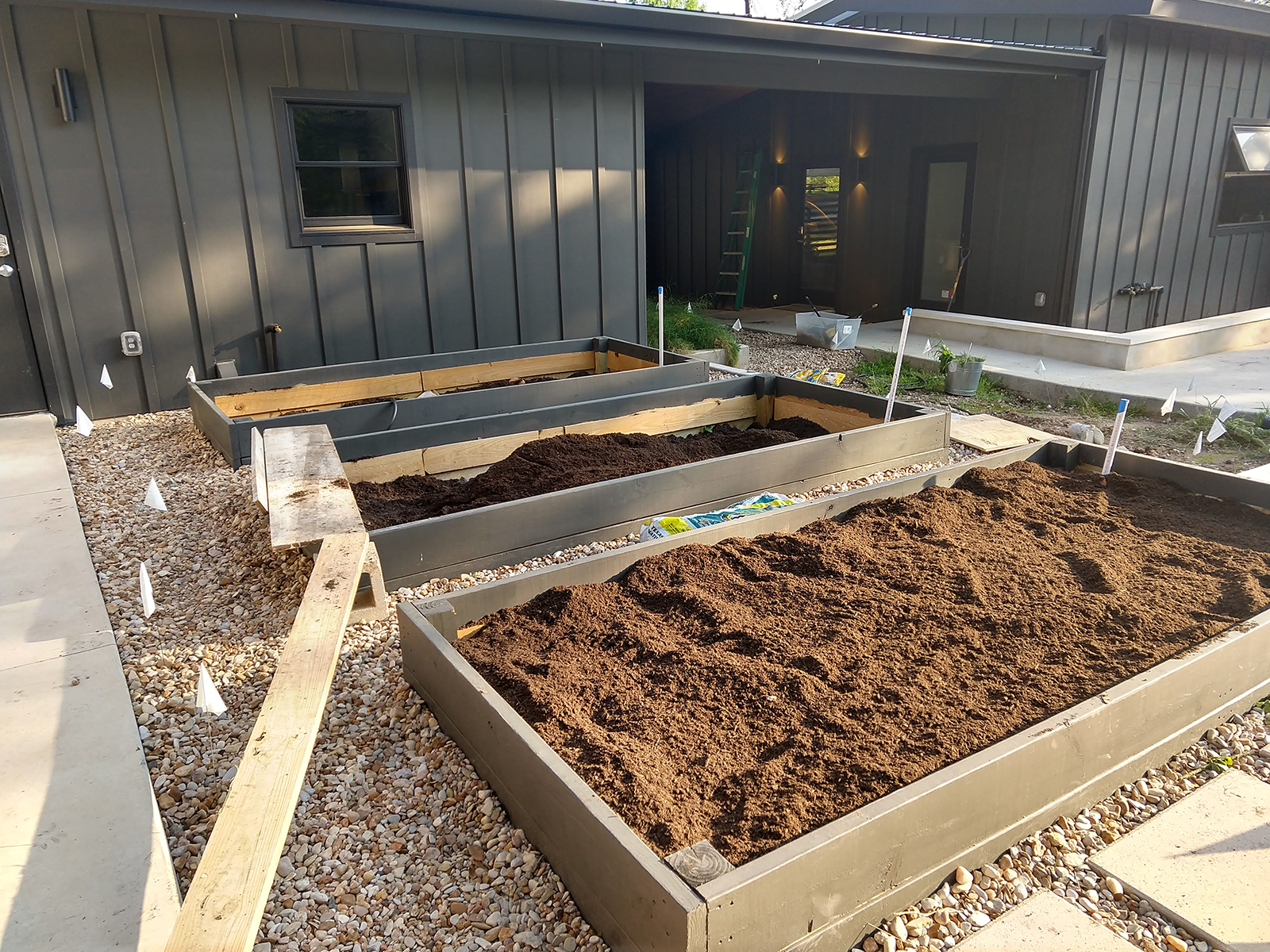European Nightcrawlers: Benefits of Earthworms in the Garden
This blog post was updated February 15, 2024This page may contain affiliate links. Click here to learn more
European NightCrawlers are my favorite breed of earthworm to add to the garden. This garden powerhouse worm loosens, mixes, fertilizes and distributes important microbes into the soil so your plants can thrive. Keep reading to learn how introducing ENC can boost your soil fertility for a productive, beautiful organic garden.
The European Night Crawler is one of the best worms for introducing to your raised beds, containers and garden plots. The ENC is easy to raise and a hardy worm that tolerates most temperature fluctuations. Sometimes known as the super red worm, they can breed quickly which is a benefit because they loosen, mix, fertilize and distribute important microbes in the soil. I’d say this little guy is a powerhouse in the garden!
It’s important to know that not all earthworms are beneficial but for the sake of this article we will only focus on the good.
what are european nightcrawlers?
The European NightCrawler (Eisenia hortensis/Dendrobaena veneta) is a type of earthworm. Although there are over 6000 varieties of good and bad earthworms, this creepy-crawly is one of the good guys. Because they love to nosh on decomposing matter at the surface they quickly transform unwanted debris from your garden beds into nutrients your plants need to thrive.
general european nightcrawler facts
Mostly known for being sold as fishing bait
ENC likes to dig deep but are typically top feeders. I learned this early on in introducing them to my garden because everytime I would lift the newspaper to remove the coverings they were always on top. I chalked it up as them being a little slow on the uptake.
ENC like dark, moist soil and breathe through their skin.
They eat and breed quickly so they are great for creating the earthworm castings, AKA black gold, you need for your vegetables and herbs to grow
They are male and female. I won’t go into worm sex here, but every adult ENC will have at least two babies every week! That is a lot of aerating activity in your garden bed.
The European NightCrawler’s lifespan can be anywhere from 2-8 years for one worm and once you’ve introduced them to your soil, generations will take care of your garden for years to come if the conditions remain hospitable.
Larger than my vermicomposting superstar, the red wriggler, the ENC eat significantly less ‘food’. This is why I opt to keep them in the garden, yard and in my pet waste composting bin instead of using them to harvest worm castings.
the life of a european nightcrawlers
• European NighCrawlers eat their weight in organic matter and soil each day; a diet consisting of dead leaves, grass clippings, rotting plants, animal manure, and soil. Their tough digestive systems churn it all up with enzymes and return all the good stuff back into the earth.
• European NightCrawlers remove unwanted surface debris and it is said that they might even prefer to eat certain fungi that can be detrimental to the garden.
• All of the above activity turns soil into humus (not hummus!) and provides a stable soil structure under wet or dry conditions (are you yawning yet? eyes glazing over with boredom?)
So what does this all mean for your garden health?
Healthy, diverse soil due to the work of European Night Crawlers
benefits, how worms help your soil fertility and stimulate plant growth
Earlier I talked about how they create humus which is vital to our growing gardens. Humus, simply put, is the result of decomposed organic material from soil microorganisms. Humus is extremely important in the garden because it loosens dense soil. It’s spongy nature holds 90% of its weight in water which protects plants from stages of drought and assist with the uptake of calcium, magnesium and phosphorus.
These worms create good soil structure! How? The worms achieve this by burrowing through the soil to create air and space to reach plant roots. In turn, aeration and creation of channels allows rain water and irrigation water to penetrate the soil at a deeper level.
Since ENCs, as well as other beneficial earth worms, can burrow quite deep they can help plants, carrots for instance, reach their roots deeper. Their castings are also very rich in nitrogen, phosphorus, potassium and (why I choose to vermicompost with Red Wrigglers]. They help bind calcium, iron and sulfur that help plants thrive. The end result is an elevated soil fertility for optimum plant growth. Are you excited about worms yet!?
Even when an ENC or earthworm dies their body is recycled in the form of more nitrogen.
Pretty cool, huh!?
By now, I hope you are seeing how much worms can help create healthy soil biodiversity by enriching the soil further.
Pro Garden Tip:
Unlike their cousin the red wriggler, they do not like dips in soil PH which lead to acidic soil conditions so don’t be surprised if they don’t do well in a blueberry patch, for instance.
If you choose to add coffee grounds in excess to your garden know that ENCs won’t be happy with the change in environment. Everything in moderation, my friend.
how to increase the number of earthworms
If you have discovered the gift of worms in your garden beds but want to attract more, mulching the top of your garden is a way to attract the little critters. But if you have the time and know that other areas of your yard are rich in worms, you can dig up chunks of soil where they are present and just set the dirt directly on top of your garden.
how to introduce new worms to your garden
Sometimes you don’t have the time or patiences to wait around for earthworms to present themselves. In my case, [pic of garden beds] I had to establish a whole new series of gardens on our property from scratch due to a renovation a few years ago. In one particular area, we had dirt brought in because I had designed raised beds which are sandwiched between the house porch, walkways and pool. The particular garden is fully surrounded by concrete and is also at a new property elevation where dirt did not previously exist. I knew nature would need help!
Earthworms simply do not like soil disruption. If you have had new construction, or have test your soil to discover you have poor dirt (which we did on other rocky, limestone areas of our property), you might need to have enriched dirt delivered.
Let me tell you! If your area is a decent size (even a 50 sqr foot bed), it is sooooo much cheaper to have dirt delivered than hauling bags to and from a big box construction store. TRUST ME! Plus, you get a great arm workout in (wink wink).
Area of future garden: Due to filling in terrain after construction we needed to bring in nutrient dense dirt.
other reasons you might need to buy and introduce european nightcrawlers
Soil is too dense and compact
You soil is low in nutrients (as seen in my situation). [You can read this article on 3 different ways to test your soil health in the garden.]
A good worm-to-soil ratio is around 250 worms per 50 square feet in order to create a healthy soil structure. Here are some tricks to adding them to a garden bed:
Dig and till your soil at least 12-16 inches down to loosen clumps and to create an inviting habitat for your new European NightCrawlers.
Add organic material like whole chopped bananas (yay for potassium!), dead leaves, or more acid-free food scraps. Just remember to stay away from coffee grounds, citrus and hot peppers (throw those in your normal compost). In my experience, you must keep the worms busy eating in their new environment so they don’t crawl away
Release the worms in the evening into moist, but not heavily wet, soil. No need to break them up.
Cover your worms. You want to protect them from hungry birds and the sun! Grab some newspaper or cardboard to lay on top (I personally like to wet the newspaper or cardboard and gently weigh them down so the wind doesn’t blow them away. Sad story, I released a batch of worms mid-afternoon on what I thought would remain a cloudy day. The sun came out and the wind blew away my newspaper. Poor guys fried in the sun!
Don’t be surprised if they hang around the surface for awhile. Remember they like to feed at the top of the beds more than they like to feed deep ESPECIALLY when they are first introduced to their new home.
Growing a productive garden in Central Texas (Zones 8b/9) comes with unique challenges, from unpredictable weather to intense summer heat. The 12-Month Central Texas Growing Guide is designed specifically for this climate, providing a month-by-month planting schedule, expert growing tips, and sustainable gardening strategies to help you cultivate a thriving garden year-round. Whether you’re growing in raised beds, containers, or backyard plots, this guide eliminates the guesswork, helping you plant at the right time and keep your garden productive in every season.
Common Questions about ENC
-
Some resources claim you can place the ENC directly into your compost bins but proceed with caution. In our case, we have both ‘open’ compost bins, as well as closed rolling bins. Depending on your environment, zone, and varying temps I would use discretion on where you place them. Remember I mentioned in the beginning that ENC are more top feeders? You want to be careful if placing them in a closed compost tumbler because of the risk of high temperatures cooking them.
-
No! Just make sure to add that lovely mulch and decomposing debris, which I guess technically is ‘food’, to the tops of your beds to nourish and protect the worms for the elements. This is especially important if you live in an area with extreme temperatures and if your new bed is not established with plants!
buying and releasing european nightcrawlers
Uncle Jim’s Worm Farm is, by far, the most reliable source that I’ve used for buying European NightCrawlers for the garden. For around $30, you can introduce about 250 worms into your garden beds. They have great customer service and you can generally receive your worms in under a week.
In my experience, you will receive your worms in a box with holes, labeled ‘live agriculture’ or ‘perishable’. Although pretty hardy, you will want to get them inside as soon as you can, especially if you have a sunny porch (by the time they arrive, they will have been in transit for at least 48 hours). Uncle Jim’s always guarantees their product and I have never had any issue receiving my worms alive.
Even when I have been able to retrieve my package from the porch in a timely manner, sometimes I haven’t been able to get them in the ground quickly. In this case, I’ve placed them in a cool dark room or the refrigerator which slows their activity. It drives my son crazy when he opens up our fridge to find worms, lady bugs, and other live-bug packages; yet gives me immense joy to watch my squeamish, teen squirm!
I will re-emphasize here to release them in the evening! Follow the above steps in the section on how to successfully introduce the worms to your garden. And please report back how it went for you!
I will make a video soon so you can see my releasing process. We’ve got some high raised beds that are in need of some worm-love so stay tuned!
If you are feeling brave and want to take raising worms to the next level!? Article on Vermicomposting coming soon …..This is a gardener’s inside secret to a flourishing garden!








